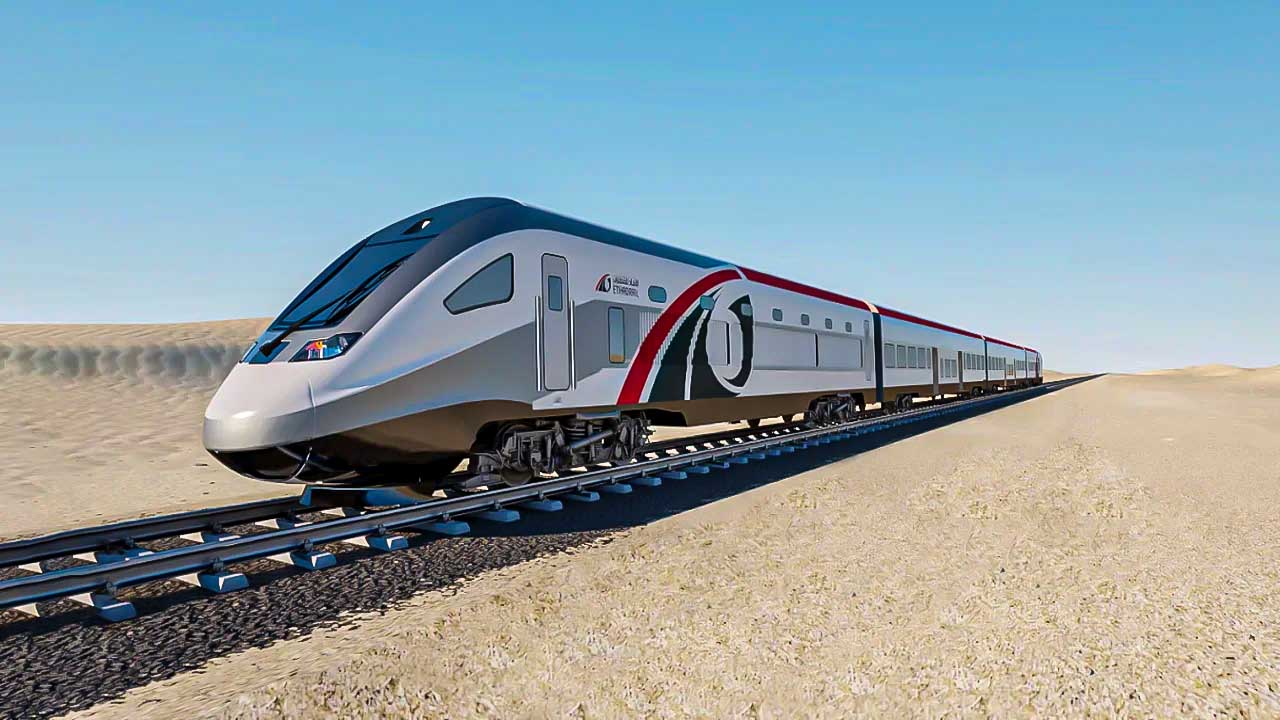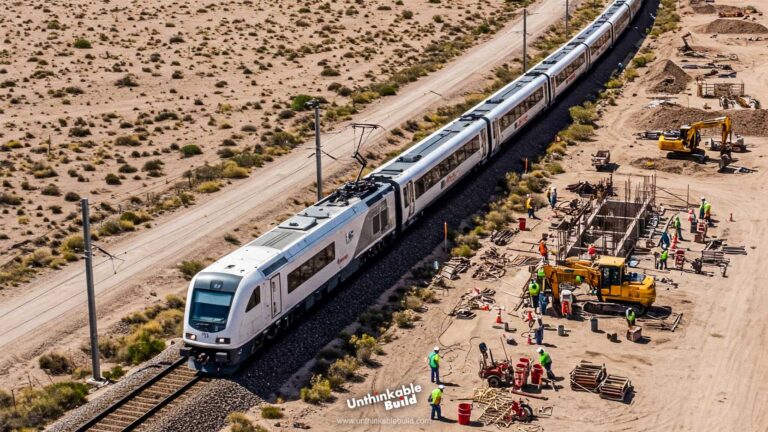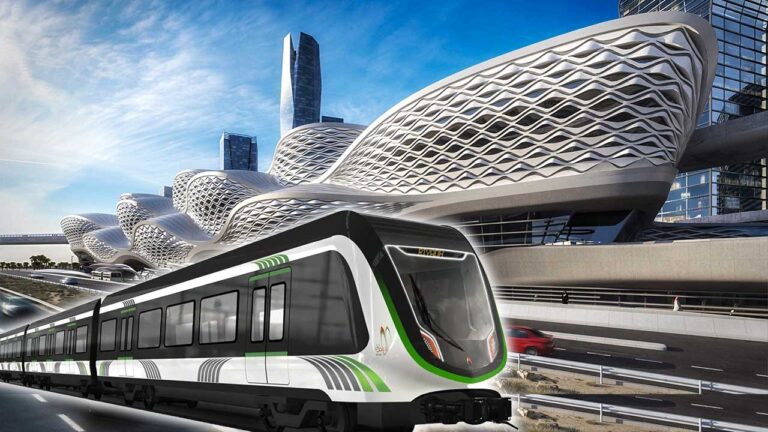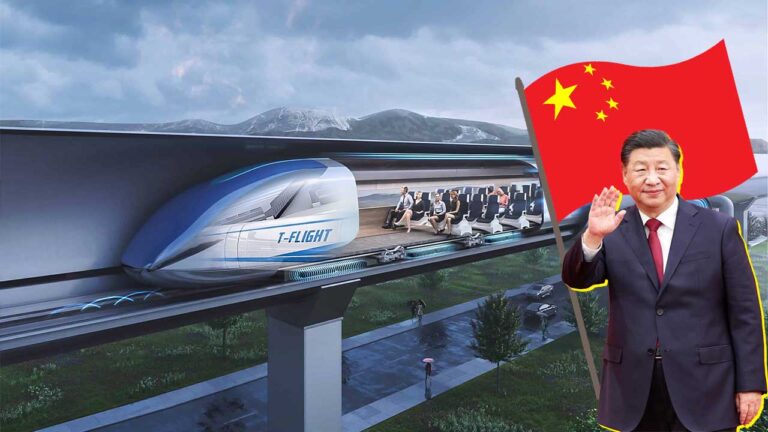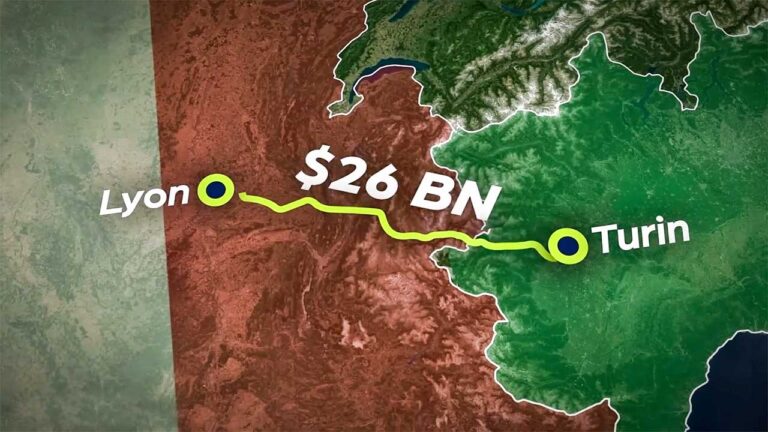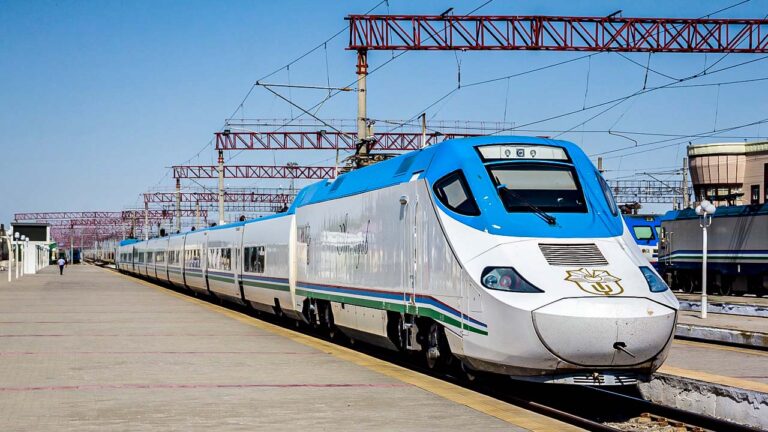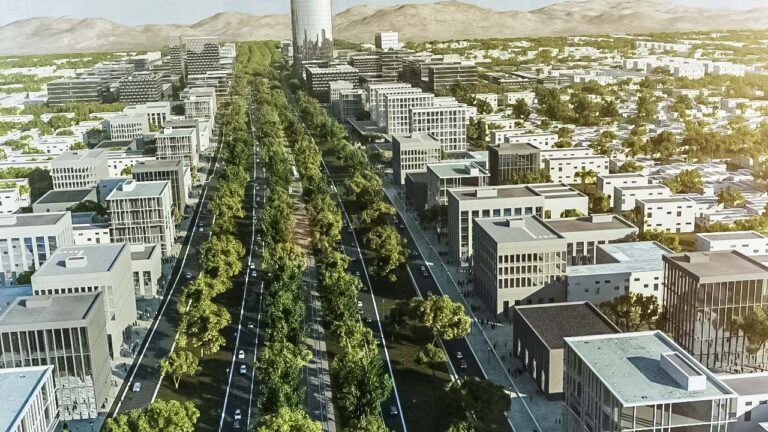Etihad Rail – UAE’s $100 BN Railway Mega Project in Desert
Transportation infrastructure serves as the cornerstone of a nation’s comprehensive advancement and prosperity, threading through various dimensions of societal progress. The vital channels of economic growth and connectivity pulse through the robust physical frameworks of roads, railways, ports, and airports. These pathways seamlessly facilitate the movement of goods, services, and human activities, bridging the gaps between urban and rural landscapes and providing access to markets, livelihoods, and knowledge. Enhanced connectivity nurtures regional cohesion, fostering economic growth and facilitating developmental strides.
In the United Arab Emirates, a superlative transportation infrastructure stands as a symbol of national pride, adorned with the gems of progress. Each element of this infrastructure shines brightly, illuminating the stage of advancement with its radiance. The country’s terrestrial network of roads and bridges, unmatched in its splendor, intricately winds through cities, towns, and territories, binding together the fabric of efficient mobility.
Abu Dhabi, the esteemed capital of the United Arab Emirates, holds profound significance across various domains. It stands as an economic powerhouse within the UAE, being the largest emirate and the federal capital. Its vast reserves of oil and natural gas have been instrumental in propelling its economic prowess. The emirate is actively diversifying its economic portfolio through strategic investments in infrastructure, tourism, transportation, healthcare, and education, in alignment with the ambitious Abu Dhabi 2030 economic plan.
Also Read: Sydney Metro: Australia’s Largest Public Transport Project
In the vibrant and cosmopolitan city of Abu Dhabi, where culture intertwines with progress and dynamism, a myriad of transportation options crisscrosses its bustling streets. However, amid the towering constructions and burgeoning population, the city finds itself ensnared in the labyrinth of traffic congestion and other vehicular woes, a plight that escalates with each passing day.
In response to these pressing challenges and in acknowledgment of the escalating public clamor for enhanced transportation solutions, Etihad Rail embarks on a monumental endeavor. With audacious vision and unwavering resolve, the company pledges to carve a path through the desert sands, a feat of engineering prowess commanding a staggering investment of $100 billion. This bold initiative heralds a transformative chapter in the UAE’s transportation landscape, poised to not only mitigate the scourge of escalating air pollution but also to interlace the very fabric of the nation. Spanning a vast expanse of 1,200 kilometers, this visionary rail network emerges as a unifying force, knitting together the diverse cities of the UAE into a seamless continuum of connectivity.
In the realm of ambitious endeavors, this project stands as a shared pursuit encountering universal obstacles, yet uniquely positioned within the UAE’s desert expanse. The realization of a 1,200 kilometer network amidst ubiquitous sand dunes would mark an extraordinary triumph. Today, we delve into Abu Dhabi’s strategies to confront this monumental task and assess the feasibility of its visionary plan.
In 2008, thick fog descended upon the Abu Dhabi-Dubai highway, causing chaos. Sixty vehicles collided, claiming three lives and leaving devastation in their wake. Similarly, in 2010, tragedy struck when a truck crashed into a roadside restaurant on the Abu Dhabi-Tarif highway, resulting in four fatalities. Fast forward to 2022, where a collision between a bus and a vehicle on the Abu Dhabi road towards Al Ain took two lives and left 11 others injured. These incidents serve as stark reminders of the importance of road safety.
The concept of a nationwide railway system in this context wasn’t merely bold; it was groundbreaking.
In the realm of modern marvels, Etihad Rail emerges as the visionary conductor orchestrating the symphony of the United Arab Emirates’ national railway network. Born in June 2009 under the auspices of UAE Federal Law No. 2, its mandate extends far beyond mere transportation, encompassing the dynamic development, meticulous construction, and seamless operation of the country’s freight and passenger railway system.
Also Read: Tren Maya: Mexico’s $29 Billion controversial Railway Project
Stretching like a sinuous serpent across approximately 1200 kilometers, Etihad Rail weaves its way through the heartlands of all seven emirates, forging connections from the sandy expanse of Ghuwaifat town on the border with Saudi Arabia to the azure shores of Fujairah state nestled along the eastern coast.
Within this vast network, a complex web of 593 crossings and bridges will span the landscape, intertwining connectivity across the region. Venturing into the rugged terrain of the Al-Hajaar Mountains, roughly 6.5 kilometers of tunnels will be excavated, showcasing human ingenuity and determination. Additionally, 35 bridges, sturdy and resilient, will serve as guardians for heavy cargo, ensuring secure passage through the bustling arteries of commerce and trade.
Unlike conventional railways, Etihad Railways’ freight trains are anticipated to reach speeds of up to 120 kmph. Conversely, passenger trains will zip along at speeds of up to 200 kmph, connecting 11 cities and areas. With each train accommodating approximately 400 passengers; the luxury train will feature 15 meticulously refurbished carriages, promising a journey of unparalleled comfort and style.
A dual-track layout accommodates diverse traffic needs while adhering to European Signaling System standards. This cutting-edge railway infrastructure supports heavy axle loads of 32.5 tons. Etihad Rail has just unveiled plans for tripling its wagon fleet, signaling a significant boost to future trade prospects in the UAE. The agreement to produce and deliver 842 extra wagons will elevate the total fleet to more than a thousand, expanding the transportation capacity by eight times.
Crafted with meticulous attention to detail, it adheres steadfastly to international standards, poised to seamlessly integrate into the intricate web of the planned Gulf Cooperation Council railway network. Here, in this nexus of trade, industry, and bustling population centers, Etihad Rail serves as the silent sentinel, linking principal hubs of commerce, innovation, and human endeavor with the rhythmic pulse of progress.
Since its inception in 2013, Etihad Rail has proven its mettle, embarking on a transformative journey of transporting 22,000 tons granulated sulfur from the mystical wellsprings of Shah and Habshan on 264 kilometer track to the bustling port of Ruways on the Arabian Gulf, for export. This feat not only showcases the rail as a beacon of safety, sustainability, and efficiency but also underscores its pivotal role in shaping the economic landscape of the region.
Phase 2 of the project delves into complexity, aiming to expand the existing network from Ruways to the Saudi Arabian border at Ghuwaifat town, and onward to the port of Fujairah on the UAE’s eastern shores. This phase comprises several significant packages: Package A encompasses the rail line from Ruways to Ghuwaifat, spanning approximately 139 kilometers and adorned with 31 bridges and 8 underpasses. Meanwhile, Package B establishes a connection between the UAE and Saudi Arabia, stretching about 166 kilometers and adorned with 11 bridges and 60 underpasses. Package C focuses on crafting a 94-kilometer line from Al Ain to Abu Dhabi, while Package D addresses the necessity for a 145 kilometer stretch directly linking Dubai and Abu Dhabi.
The ultimate vision is to integrate the UAE with other Gulf nations, a goal set for Phase 3. At this stage, the entire UAE will be interconnected, with railway tracks extending into the Northern Emirates like Ras Al-Khaima and Fujairah. Ras Al-Khaima, once a tranquil locale, is poised to become a pivotal hub in the UAE’s narrative of growth, gaining a high-speed link to all major cities courtesy of this monumental project. This development promises increased local employment opportunities, a surge in commercial activity, and a boom in tourism, transforming a serene town into a vibrant urban center. The ripple effects of this project are vast and far-reaching.
Projected to carry the equivalent of 36.5 million passengers and 50 million tons of goods daily, the Etihad Rail transcends its role as a mere railway. Each inch of track laid, every ton of freight transported, and every mile traversed symbolizes the nation’s aspirations for progress and cohesion. The Etihad Rail is single-handedly reshaping boundaries.
Beyond the tangible benefits lie the intangible rewards of the Etihad Rail. It offers a gateway to cost-effective solutions, swift transit times, reinforced safety measures, and a sustainable future where carbon emissions are reduced, and resources are utilized judiciously.
In essence, Etihad Rail stands as the veritable lifeline, breathing vitality into the veins of connectivity, trade, and logistical prowess, not only within the confines of the UAE but also reverberating across borders, transcending boundaries, and forging pathways towards a brighter tomorrow.

